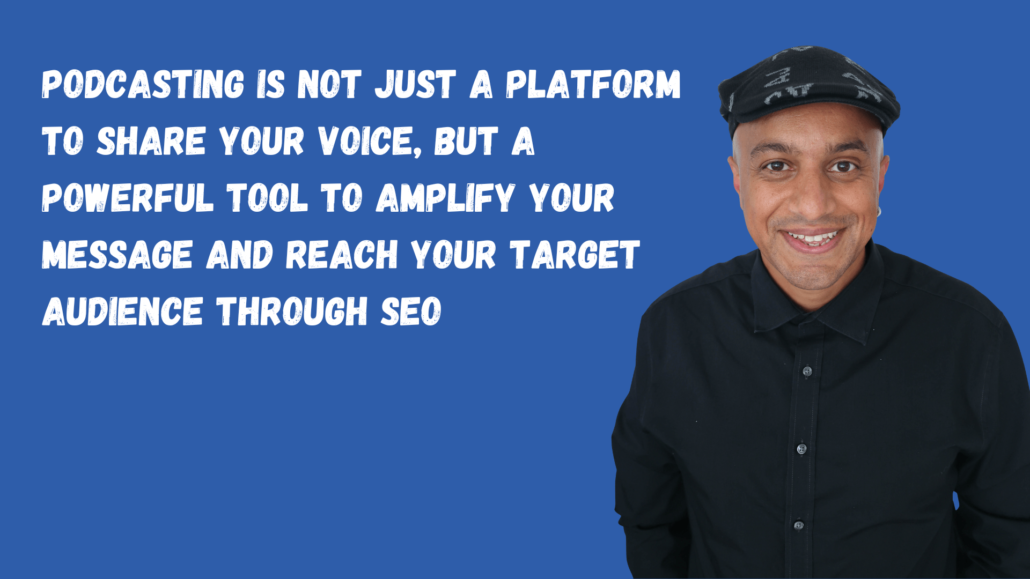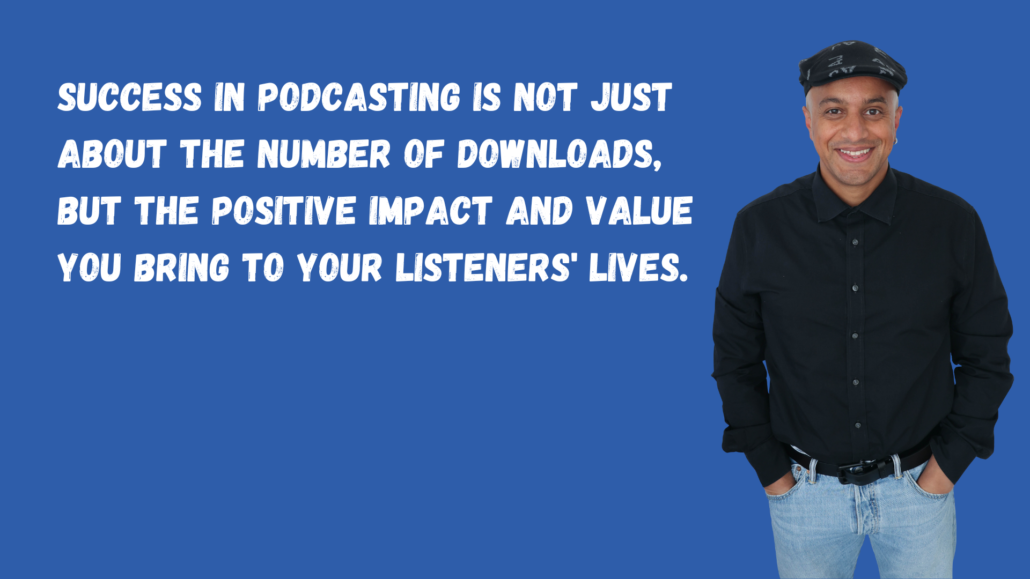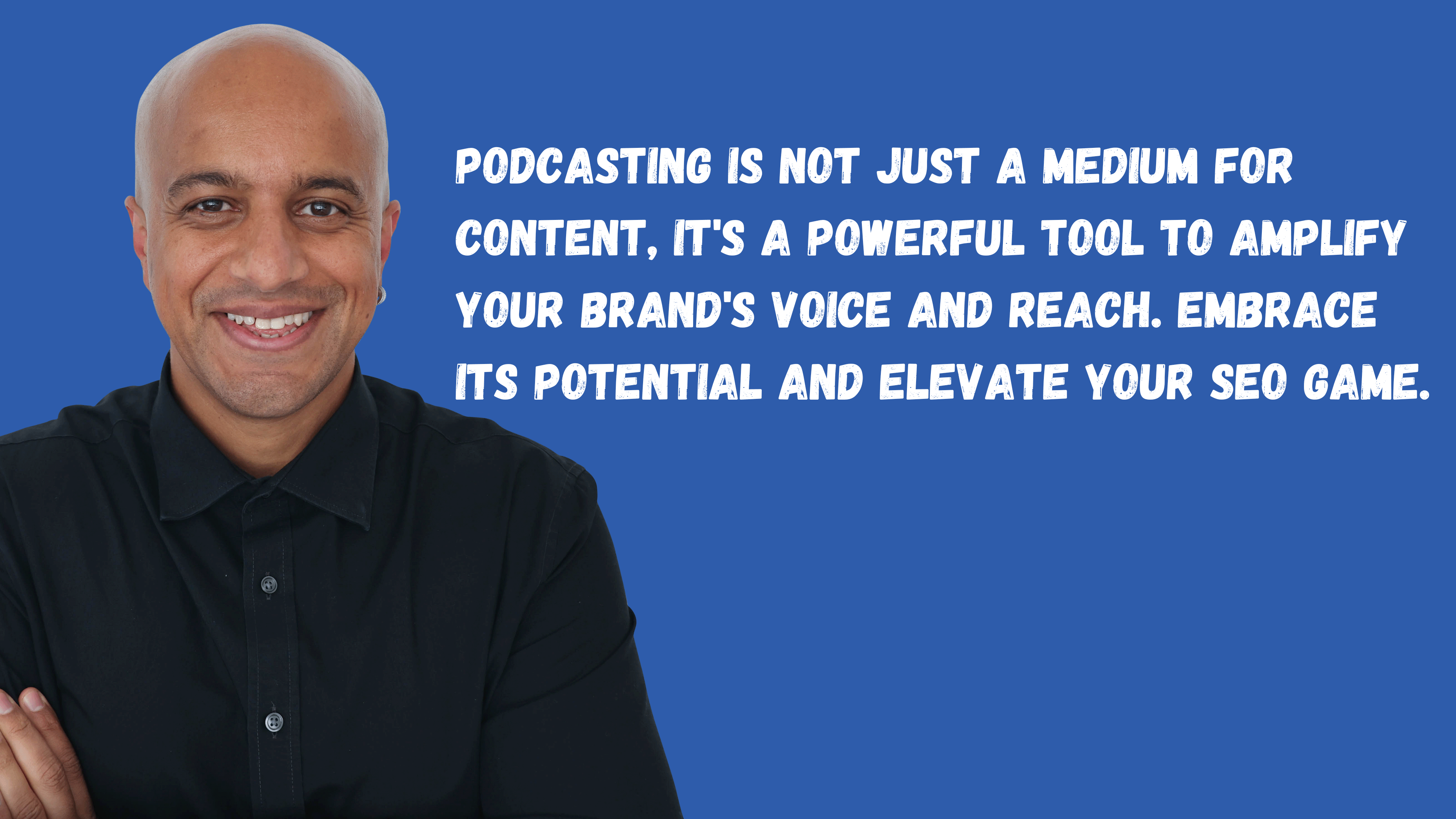Podcasting has become increasingly popular in recent years as a great way for individuals and online businesses to connect with their audiences in a deeply meaningful way. With the rise of podcasts, it’s important to consider using podcasting as part of your SEO strategy.
Podcasting can be a very powerful marketing tool that can drive traffic to your website, build brand awareness, and establish yourself and your brand as an authority in your industry. Becoming an authority in your field is a great way to stand out from the competition (crowd) and can lead to increased opportunities for business growth, higher brand recognition, and the ability to influence the direction of your industry. But before you start you have to understand that podcasting is a commitment. Similar to SEO it takes time and effort to grow your podcast and see tangible results.
In this article, I will try to give you some tips and ideas on how to use podcasting as part of your SEO strategy for better organic visibility and brand recognition in your niche.

Identify your podcast’s target audience
Identifying your target audience is the first step in creating a successful podcast and using it as part of your SEO strategy. Here are some tips you can use to identify your target audience:
- Conduct market research: Start by conducting market research so you truly understand your target audience’s needs, preferences, and most of all their pain points. You can use tools such as Google Analytics, social media insights, and surveys (from my personal experience surveys are very effective) to gather data and insights about your target audience. Analysing this data can help you create content that resonates with your target audience and increase engagement with your podcast (ensuring your show is engaging and offers value to your listeners is essential).
- Define your ideal listener: Define your ideal listener by creating buyer personas that represent your target audience. A buyer persona is a fictional character that represents your ideal listener and includes information such as age, gender, occupation, interests, and pain points. This can help you create content that is tailored to your ideal listener (and their interests and pain points) and greatly increase the likelihood of reaching your target audience.
- Analyse your competitors: Analyse your competitors’ podcasts to understand what they are doing well and what you can do differently (the important keyword here is ‘differently’). Look at their topics, format, and audience engagement to get ideas for your own podcast. You can use tools such as Apple Podcasts, Spotify, and Google Podcasts to analyse your competitors’ podcasts and get insights into their audience demographics and engagement.
- Engage with your existing audience: Engage with your existing audience to understand their needs, preferences and pain points. Ask openly for feedback, always respond to comments and reviews, and conduct surveys to gather insights on how to improve your podcast. This can help you create content that is tailored to your audience which in return will increase the engagement with your podcast.
- Use keyword research tools: Use keyword research tools such as Google Keyword Planner, SEMrush and SE Ranking to identify keywords related to your topic that your target audience is searching for. This can help you create content that is optimised for SEO and increase the likelihood of reaching your target audience.
Note: Remember, identifying your target audience should not be a one-off exercise but an ongoing process. You should continue to gather insights and feedback from your audience and adjust your content accordingly.
Choose your podcast topic
Once you’ve identified your target audience, choose a topic for your podcast. Your topic should be relevant to your audience and align with your business objectives. You should also consider the competition in your industry and choose a topic that differentiates you from your competitors (Important!).
Plan your podcast episodes
Planning your episodes in advance will ensure that you have a consistent flow of content and keep your audience engaged. From my personal experience, I can tell you that a regular flow of content demonstrates reliability and true professionalism, and can ultimately drive conversions and sales.
When planning your podcast episodes, consider the format, length, and frequency of your podcast. You should also consider the topics you’ll cover in each episode and any guests you may want to interview.
Guest to your podcast can bring valuable expertise, insights, and different perspectives to your show, helping to keep the content fresh and engaging for listeners (old and new). They can also help to expand the show’s reach by promoting episodes to their own audiences and establishing your brand as a thought leader by association.
Record and edit your podcast episodes
After planning your episodes, it’s time to begin recording. During the recording process, it’s crucial to use high-quality podcast audio equipment to produce clear and crisp audio. The importance of having good audio cannot be overstated. Poor audio quality, characterised by static or echoes, can be unpleasant and uncomfortable for listeners and may cause them to lose interest in your podcast. And from my personal experience, I can tell you that it is very unlikely that your listeners will give you a second chance if you fail to meet their expectations the first time they land on your podcast.
Nowadays some famous podcasters, like Joe Rogan, also produce a video with each podcast and use this video or parts of it to promote their podcast on various social media platforms. I have to admit that this is a brilliant idea. I also have to admit that ‘How video content can help your website’s SEO’ is a good topic to discuss in a future article (wink).
Optimise your podcast for SEO
Optimising your podcast for SEO is critical to driving traffic to your website and increasing your organic visibility in search engine results (SERPs). Here are some strategies you can use to optimise your podcast for SEO:
- Choose a ‘keyword-rich’ title: Your podcast title should be keyword-rich and relevant to your target audience (but don’t overdo it). Choose a title that accurately reflects the content of your podcast and includes keywords related to your topic. This will make it easier for people to find your podcast when they search for related topics on search engines like Google and Bing or podcast directories.
- Use descriptive keywords in your description: Your podcast description should be clear, and concise, and include relevant keywords related to your topic. This will help search engines and podcast directories understand what your podcast is about and index it accordingly. Similar to a Meta Description your podcast description should also provide an overview of what listeners can expect to hear in each episode and this will help improve the Click Through Rate (CTR).
- Include links to your website and social media profiles: Include links to your website and social media profiles in your podcast description. This will help listeners easily find and connect with you on other platforms. It can also increase the likelihood of listeners sharing your podcast on social media or visiting your website.
- Transcribe your episodes: Transcribing your podcast episodes and posting them on your website can improve your SEO. At least for now, search engines can crawl and index text far better than they can index audio. Search bots can’t listen to audio (I am sure this will come in the future); they can crawl the metadata but not the content within the file. So transcribe your podcast episodes so search engines like Google and Bing can index the text content of your podcast and use it to understand the content of your podcast. This can also help you reach a wider audience, including those who prefer to read the content rather than listen to podcasts.
- Use relevant tags and categories: Tags and categories can help search engines and podcast directories understand the content of your podcast and index it accordingly. Use relevant tags and categories that accurately reflect the content of your podcast and make it easier for people to find your podcast when searching for related topics.
Note: Remember, optimising your podcast for SEO is an ongoing process. You should continue to update your podcast description, tags, and categories as needed to reflect the content of your podcast and reach a wider audience in order to drive more traffic to your website.
Promote your podcast
Promoting your podcast is essential to building your audience and driving traffic to your website. Here are some more in-depth strategies you can use to promote your podcast:
- Share on social media platforms: Social media is a powerful tool to promote your podcast and reach a wider audience. Share your podcast on your social media platforms, such as Facebook, Twitter, Instagram, and LinkedIn, and include a link to your podcast. Consider creating social media graphics or short video clips to promote each episode and increase engagement. Your audience most likely uses one or two of the big social media platforms but if your listeners are active on a small community like BikerOrNot (a social community for bikers), that’s where you should be. I always say ‘Follow your fans’.
- Email blast to your subscribers: Send out an email blast to your email subscribers to let them know about your new episode. Give them a good reason to subscribe. You can also include a call-to-action to encourage them to share your podcast with their friends and family.
- Cross-promote with other podcasters: Partner with other podcasters within your industry to cross-promote each other’s podcasts. On one side this will help you reach a new audience and on another side build relationships with other podcasters. Tapping into other people’s audiences is vital for bringing people to your podcast that otherwise wouldn’t have heard about your brand. Not just that but the other podcasters by default will have to portray you as an authority in your industry which in itself is a good starting point with a new audience.
- Submit to podcast directories: Submit your podcast to podcast directories such as Apple Podcasts, Spotify, Google Podcasts, and others. This can help you reach a wider audience and increase your visibility. Also seeing your podcast there conveys trust in your potential broadcast listeners.
- Guest appearances on other podcasts: Appear as a guest on other podcasts in your industry to reach a new audience and establish yourself as an authority in your field. This can also help you build relationships with other podcasters. When introducing your business always (casually) mention your podcast.
- Paid advertising: Consider using paid advertising, such as social media ads or Google Ads, to promote your podcast. This can help you reach a wider audience and increase the visibility of your podcast.
It goes without saying that promoting your podcast is an ongoing process and you should continue to promote each episode even after it has been released to increase engagement and build your audience. In my personal experience, 80% of the success of your podcast will come from promoting it and constantly talking about it to business partners and clients. Word of mouth is still one of the best forms of advertising.
Measure your podcast success

Measuring your success is an essential part of using podcasting as part of your SEO strategy. In general measuring success in digital marketing is of crucial importance for several reasons. Firstly, it allows you to evaluate the effectiveness of your marketing campaigns and determine whether you are achieving your desired outcomes. This information can help you identify areas for improvement and refine your marketing strategies to achieve better results. In our case, the main question to ask is: does my broadcast bring enough people to my website and can I monetise it (it doesn’t have to be money, it could be also leads)? So let me give some points you can use to measure your success:
- Track your downloads and listenership: Track your podcast’s downloads and listenership to understand how many people are tuning in to your podcast. To track your downloads and listenership you can use podcast hosting platforms like Libsyn, Buzzsprout, or Blubrry. This can help you understand which episodes of your podcast are popular and which ones need improvement. Closely analyse the topics of the popular podcasts and if possible dive deeper (or approach from a different angle) into the same subjects.
- Monitor your rankings: Monitoring your podcast’s rankings on podcast directories like Apple Podcasts, Spotify, and Google Podcasts can help you understand how your podcast is performing compared to your competitors and how to improve your rankings. To monitor your rankings use tools like Chartable, Podtrac, or Podcharts.
- Monitor your website traffic: Monitor your website traffic (I already told you to link to your website in your podcast description) to understand how many people are visiting your website from your podcast. You can use tools like Google Analytics 4 or even better link GA4 to BigQuery to track your website ‘podcast’ traffic and understand how many people are visiting your website from your podcast. This can help you understand how effective your podcast is at driving traffic to your website and subsequently if people coming from your podcast convert (or become leads).
- Track your social media engagement: Tracking your social media engagement will help you to understand how many people are engaging with your podcast on social media. To track your social media engagement and understand how effective your podcast is at engaging with your target audience, use tools like Hootsuite, Sprout Social, or Buffer. Before I forget let me tell you that in my personal experience, the best way to promote a podcast on social media is to promote an upcoming season with video and audio clips that highlight some of your upcoming guests. And if your brand has a good sense of humour share something funny from the podcast recording that will make your potential visitors laugh, think, and share with their friends. Another good idea is to create behind-the-scenes clips or a blooper reel to promote your podcast on social media channels.
- Monitor your reviews and feedback: Monitor your reviews and feedback to understand how your audience is responding to your podcast. This process can help you understand what your audience truly likes and dislikes (it happens so don’t be too mad about it) about your podcast and how to improve it. It is very important to try and respond to as many reviews and feedback on social media as possible. By acknowledging and addressing feedback, you demonstrate that you are listening to your audience the same way they are listening to you (pun intended) and taking their opinions into account. This can help build loyalty and encourage repeat engagement and word-of-mouth promotion. Last but. not least reviews and feedback can give you topics to discuss in future podcasts. To monitor your reviews and feedback go to the comments section on podcast directories, social media or your website. If you are more adventurous you can use natural language processing (NLP), and machine learning to evaluate online reviews and feedback on social media posts.
- Use surveys and feedback forms: It is super important to use surveys and feedback forms to gather comments from your audience on how to improve your podcast. This can help you understand what your audience wants and how to improve your podcast. To create surveys and feedback forms use tools like SurveyMonkey, Google Forms, or Typeform .
- Analyse your conversion rates: Analyse your conversion rates to understand how effective your podcast is at converting listeners into customers, subscribers or leads. This can help you understand how to improve your podcast and increase your conversion rates. To track your conversion rates you can use tools like Google Analytics 4 (highly recommended) or Amplitude .
Conclusion
Podcasting can be a powerful tool to drive traffic to your website, build brand awareness, and establish yourself as an authority in your industry. By identifying your target audience, choosing a topic, planning your episodes, recording and editing your episodes, optimising your podcast for SEO, promoting your podcast, and measuring your success, you can effectively use podcasting as part of your SEO strategy.
Remember to stay consistent and patient as it may take time to see the results of your efforts.
Happy Podcasting!


Leave a Reply